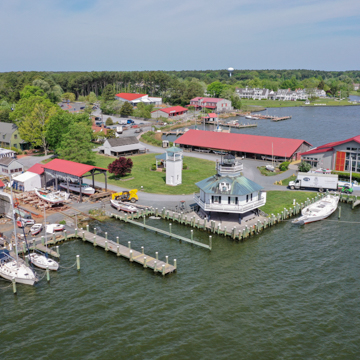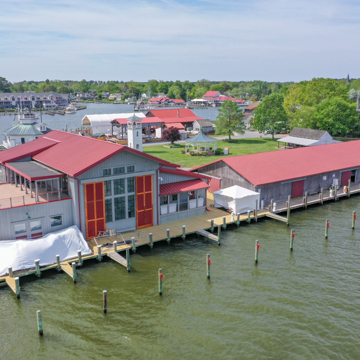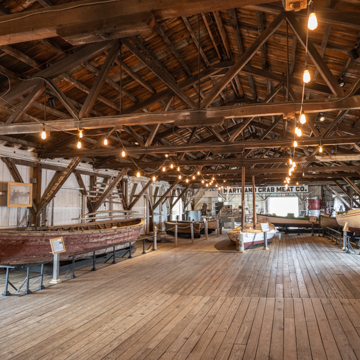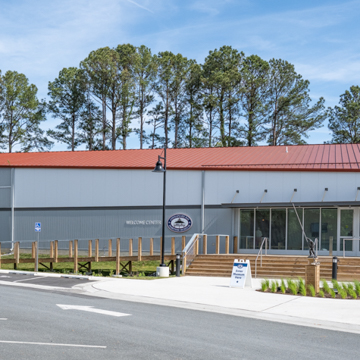Located on the former site of St. Michaels’s seafood-packing industries, this complex of buildings houses the largest and most comprehensive collection of Chesapeake Bay watercraft in the nation. A freight shed built in 1888 by the Baltimore, Chesapeake, and Atlantic Railway Company was moved here in 1933 for use by the St. Michaels Packing Company as a tomato cannery. It now houses a wide-ranging assemblage of often-rare small craft specific to the Chesapeake Bay. An eighteenth-century corn crib is home to the gunning or fowl-hunting boat collection, including sneak, ice, and sinkbox boats.
While these buildings display work boats, a building designed by Quinn Evans and built by Whiting Turner Contracting houses the permanent Play on the Bay exhibit that tells the story of recreational boating, revolutionized by the advent of fiberglass and motorized boat engines. It was built resembling a typical transverse board-and-batten barn with side shed, raised-metal gable roof, and lofty interior. An eleven-vessel floating display encompasses prime examples of such Bay boats as the rare fifty-three-foot bugeye Edna Lockwood. The site includes a boatbuilding and repair shop and the 1879 Hooper’s Strait octagonal screw-pile lighthouse, moved here in 1966.
The museum owns several representative local houses that line its Mill Street boundary and that accommodated the first exhibitions. The museum opened in 1965 in the c. 1851 Captain Dodson House built as a three-story, two-bay brick dwelling with a decorative three-story gallery. Within the year, the exhibitions expanded into the similarly styled, neighboring Higgins House (c. 1856), and the Eagle House (1893), with a central entrance tower flanked by two-story galleries.

















